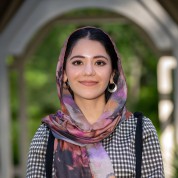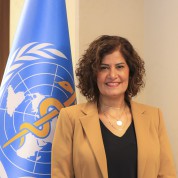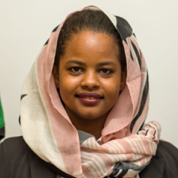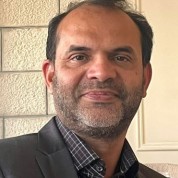PS 3.4
Peace Under Pressure: Navigating Conflict, Environment, and Population Health
30
Jan
Peace is under immense and multifaceted pressure in the 21st century. No longer defined solely by the absence of war, it is increasingly threatened by ecological breakdown, widening economic inequality, demographic shifts, and political fragmentation. These intersecting factors destabilize societies, erode public institutions, and undermine systems that protect population health, human dignity, and social cohesion.
As crises converge, there is an urgent need to rethink what it means to build peace and safeguard public health in an unstable world. It demands strategic investment in health equity, ecological sustainability, and gender justice, pillars that strengthen societal resilience and promote long-term human security, defending and safeguarding the rights and well-being of future generations.
Escalating armed conflicts and geopolitical tensions
The world is witnessing a resurgence of prolonged and complex conflicts. The UN Secretary-General has warned that global peace is becoming increasingly elusive, with conflicts deepening and international cooperation weakening (UN, 2024). In 2023, nearly 2 billion people lived in conflict-affected areas (UN, 2023), profoundly affecting health, social cohesion, and development. By 2024, the UN recorded around 32 million refugees and 67 million internally displaced people (IDPs) (Statista, 2025). Children in conflict zones are particularly affected, facing direct violence, malnutrition, psychological trauma, and preventable disease due to the breakdown of healthcare systems and essential services (Bhutta et al, 2021).
The scale of global militarization compounds the crisis. Global military spending reached an unprecedented $2.72 trillion in 2024, a 9.4% increase from the previous year and the steepest rise since the end of the Cold War (SIPRI, 2024, 2025). The erosion of arms control treaties and the modernization of nuclear arsenals pose an additional layer of global health risks. Key treaties such as the Intermediate-Range Nuclear Forces (INF) Treaty and the New START agreement have either collapsed or face uncertain futures, undermining decades of disarmament efforts (Arms Control Association, 2025; Brookings Institution, 2019).
As the Doomsday clock has moved to its most perilous position since its establishment in 1947, the escalation of conflict between nuclear-capable states, including the current crisis between Russia and Ukraine, and between Iran and Israel, increases the risk for global instability (Science and Security Board, 2025). As of 2024, nine countries maintain approximately 12,121 nuclear weapons, with over 2,000 on high alert (SIPRI, 2024). Beyond the existential risk of nuclear war, nuclear testing and environmental contamination have left lasting scars on communities, especially in the Pacific Islands and Central Asia, where countries are now calling for renewed WHO-led assessments to examine intergenerational health impacts and integrate nuclear preparedness into public health systems (Zarocostas, 2025).
Escalating geopolitical tensions, environmental collapse, and declining public trust are gravely testing the foundations of peace and stability. The shifting centers of influence, the politicization of global aid, and rising nationalism further complicate the collaboration on issues critical to human survival such as climate, health, and security thus weakening global governance.
Rivalries between major powers, such as the U.S.–China trade conflict, have intensified protectionism and fragmented global cooperation on sustainability and health. The UN Secretary-General has warned that existing global security arrangements are "disintegrating," with multilateral disarmament mechanisms failing to adapt to the complexities of a multipolar and climate-stressed world (Reuters, 2024).
Planetary health crisis as a conflict multiplier
Environmental degradation is no longer an ecological concern but a conflict accelerator. A planetary health perspective reveals how climate shocks, biodiversity loss, and pollution drive displacement, erode livelihoods, and deteriorate fragile governance systems. These disruptions in natural systems trigger and amplify social, economic, and political tensions, while undermining health systems and population well-being. The IPCC's Sixth Assessment Report highlights how climate-driven events such as droughts and resource scarcity are linked to food insecurity, armed conflict, and mental and physical health burdens (IPCC, 2023).
Research by Mach et al. (2019) supports this view, noting that climate factors, particularly drought and temperature extremes, affect organized armed conflict, though socioeconomic development and low capabilities of the state are judged to be more influential. Hao et al. (2023) argue that environmental disruptions not only exacerbate local resource competition but also erode state legitimacy when decision-makers fail to respond effectively, thereby fostering social unrest and violent mobilization.
Climate-induced insecurity is also spatially and socially uneven (WHO, 2023). The Climate Conflict Vulnerability Index maps hotspots where ecological stress intersects with institutional fragility and poverty, highlighting regions such as the Sahel, Horn of Africa, and parts of South Asia as particularly at risk (PIK, 2024). Women and girls face heightened vulnerabilities in climate-affected areas, including increased caregiving burdens, disruption in education, reduced access to sexual and reproductive health services, and increased risk of gender-based violence.
Violence against women remains tragically common in all parts of the world. Globally, an estimated one in three women has experienced physical and/or sexual violence in their lifetime, with significant consequences to individuals, societies, and economies (WHO, 2023; UN Women, 2024).
Meanwhile, policy backsliding, including the rollback of environmental protections and reproductive rights, signals a concerning departure from both ecological and gender justice (The Guardian, 2024; Jenkins, 2023; UN Women, 2024). These developments harm health outcomes and underscore a global democratic regression that undermines both gender equity and planetary health imperatives.
Climate-induced migration and displacement
Climate-induced migration is also a growing global concern within and across national boundaries. By 2050, as many as 216 million people could be displaced within their countries due to climate change (World Bank, 2021). Climate-induced migration often exacerbates public health challenges, particularly in regions where water, sanitation, and healthcare are already under pressure (The Lancet, 2018). These mobility patterns are not 'only' humanitarian concerns; they are also increasingly reshaping political and security dynamics.
In countries such as Italy and Greece, rising migration flows from climate-stressed regions in Africa and the Middle East are straining public services, exacerbating political polarization, and challenging social cohesion (IOM, 2023). Simultaneously, in Syria and Iraq, the compounded impacts of environmental degradation, particularly drought and desertification and protracted armed conflict are driving mass displacement. These intersecting crises underscore the urgent need for integrated policy responses that bridge public health, climate resilience, and peacebuilding to support both displaced populations and host communities.
Demographic consequences: A fractured future
Demographic shifts compound these pressures. Youth bulges, unplanned urbanization, and intergenerational tensions in fragile and climate-affected regions intensify the risk for unrest, particularly when young people lack access to health, education, and employment. Over 473 million children, more than one in six globally, live in areas affected by conflict (UNICEF, 2024). Youth climate movements emphasize the increasing frustration with inaction from older generations, underscoring how youth-led activism reshapes global justice and sustainability discourses (de Moor et.al., 2022).
Investing in women and youth is both a moral imperative and a strategic necessity. Yet they remain underrepresented in decision-making and many political and environmental institutions, and their voice and expertise continue to be overlooked when designing policies or leading negotiations (UNFCCC, 2019). UNDP (2021) reports that only 26% of national COVID-19 task forces included women. Without their voices in leadership, societies risk a demographic penalty and the erosion of hope among the very generations who must inherit and rebuild from today's crises.
Rethinking security: health for peace
Military power cannot shield populations from pandemics, heatwaves, or ecological collapse. Yet, in 2024 global military spending reached $2.72 trillion, whereas health systems and climate adaptation efforts are underfunded (SIPRI, 2024). This forces us to reconsider what peace and security mean in the 21st century and their impact on population health. The Lancet Commission on Peaceful Societies highlights the critical importance of health equity, gender equality, and inclusive governance for building resilient and peaceful societies and nudging harmful societies into beneficial ones (The Lancet, 2023). The WHO's Global Health and Peace Initiative (GHPI) launched in 2019 operationalizes this vision by integrating peacebuilding into its health programming, especially in conflict-related contexts (WHO, 2019).
Towards a peace-centered future
The Planetary Health Alliance calls for transforming development models that harm ecological and human systems. Ensuring equitable access to clean air, safe water, nutritious food, and healthcare is not merely an environmental or health priority but foundational to global stability (PHA, 2023). Incorporating the concept of quality peace further enriches this perspective. Quality peace, as articulated by Peter Wallensteen, emphasizes sustainable and inclusive peacebuilding efforts that promote long-term health and well-being. It underscores the importance of dignity, security, and the rule of law, creating a stable environment where healthcare systems can thrive (Wallensteen, 2015).
Framing peace and health through an intergenerational lens highlights the long-term stakes. Today's decisions on climate, migration, and conflict will shape life prospects for generations to come. Embedding youth voices and leadership, gender equity, and ecological stewardship at all levels of policymaking is not aspirational; it is the most rational and strategic path to a peaceful, sustainable, and equitable future for both people and planet.
Promising approaches:
- Nature-based peacebuilding: Initiatives like the UN's Peace Forests program promote ecological restoration in conflict zones to address environmental degradation and social division (UNEP, 2023). These efforts demonstrate how environmental stewardship can serve as a platform for peace.
- Health diplomacy as a peace catalyst: Collaborative health initiatives can serve as entry points for peace negotiations and confidence-building in fragile states. When created with equity and inclusion at their core, health systems can connect fractured societies and act as stabilizing institutions.
- Climate adaptation for peace: Regional and cross-border strategies, such as those explored in ASEAN and African Union frameworks, integrating health equity, climate resilience, and governance, can reduce conflict risk, enable cooperative problem-solving, and support long-term recovery.
References
- United Nations. (2024). "Global Peace Becoming Increasingly Elusive, Conflicts Deepening, International Cooperation Faltering," Press Release. Retrieved from UN Press Release.
- Stockholm International Peace Research Institute. (2025). "Trends in World Military Expenditure, 2024," SIPRI Fact Sheet. Retrieved from SIPRI.
- Bulletin of the Atomic Scientists. (2025). "2025 Doomsday Clock Statement," Science and Security Board. Retrieved from Bulletin of the Atomic Scientists. Zarocostas, J. (2025).
- "Calls for new WHO reports on nuclear weapons and health," The Lancet. Retrieved from The Lancet.
- Abbasi K, Ali P, Barbour V, Birch M, Blum I, Doherty P, Haines A, Helfand I, Horton R, Juva K, Lapena JF Jr, Mash R, Mironova O, Mitra A, Monteiro C, Naumova EN, Onazi D, Ruff T, Sahni P, Tumwine J, Umaña C, Yonga P, Zielinski C. Ending nuclear weapons, before they end us. Complement Ther Med. 2025 Aug;91:10317 doi: 10.1016/j.ctim.2025.103175. Epub 2025 Apr 8. PMID: 40210173.
- Stockholm International Peace Research Institute. (2024). "SIPRI Yearbook 2024," Oxford University Press. Retrieved from SIPRI Yearbook.
- Reuters. (2024). "UN Secretary-General Warns of Disintegrating Global Security Arrangements," Reuters. Retrieved from Reuters.
- United Nations. (2023). "With Highest Number of Violent Conflicts Since Second World War, United Nations Must Rethink Efforts to Achieve, Sustain Peace, Speakers Tell Security Council," Meetings Coverage and Press Releases. Retrieved from UN Meetings Coverage. Statista. (2025).
- "Number of Refugees and Internally Displaced Persons Worldwide Since 2000." Retrieved from Statista.
- Bhutta ZA, Waldman RJ, et al. (2021). The Lancet Series on women's and children's health in conflict settings. The Lancet. 397(10273): 1537-1555. DOI: 1016/S0140-6736(21)00527-7.
- Arms Control Association. (2025). "Curb the Skyrocketing Cost of U.S. Nuclear Modernization," Arms Control Today. Retrieved from Arms Control Association.
- Brookings Institution. (2019). "The end of an era? The INF Treaty, New START, and the future of strategic stability," Retrieved from Brookings Institution.
- Davies, S., Pettersson, T., Sollenberg, M., & Öberg, M. (2025). Organized violence 1989–2024, and the challenges of identifying civilian victims. Journal of Peace Research, 0(0). https://doi.org/10.1177/00223433251345636
- Intergovernmental Panel on Climate Change. (2023)."Climate Change 2023: The Physical Science Basis," Sixth Assessment Report. Retrieved from IPCC.
- Mach, K. J., Kraan, C. M., Adger, W. N., Buhaug, H., Burke, M., Fearon, J. D., Field, C. B., Hendrix, C. S., Maystadt, J. F., O'Loughlin, J., Roessler, P., Scheffran, J., Schultz, K. A., & von Uexkull, N. (2019). "Climate as a risk factor for armed conflict," Nature, 571(7764), 193-197. doi:10.1038/s41586-019-1300-6.
- Hao, Y., Liu, Y., & Wang, J. (2023). "Environmental disruptions and social unrest: Evidence from global data," Journal of Environmental Economics and Management, 110, 102553. doi:10.1016/j.jeem.2022.102553.
- Potsdam Institute for Climate Impact Research. (2024). "Climate Conflict Vulnerability Index," Retrieved from PIK.
- World Health Organization. (2023). "Climate Change and Health," Retrieved from WHO.
- UN Women. (2024). "Global Database on Violence against Women," Retrieved from UN Women.
- The Guardian. (2024). "US Environmental Rollbacks and Climate Commitments," Retrieved from The Guardian.
- Jenkins, J. D. (2023). "Energy Policy and Fossil Fuel Investments," Energy Policy, 156, 112345. doi:10.1016/j.enpol.20112345.
- Rudolph, L. (2025). "Erosion of Regulatory Safeguards in Environmental Policy," Environmental Policy Review, 32(2), 145-162. doi:10.1016/j.envpolrev.2024.145162.
- World Bank. (2021). "Groundswell Part 2: Acting on Internal Climate Migration." Retrieved from World Bank.
- The Lancet Planetary Health. (2018). "Climate-induced migration and health inequities," The Lancet Planetary Health, 2(6), e240-e241. doi:10.1016/S2542-5196(18)30101-7.
- International Organization for Migration. (2023). "World Migration Report 2023." Retrieved from IOM.
- BMC Medicine. (2023). "Health impacts of climate-induced migration," BMC Medicine, 21(1), 123. doi:10.1186/s12916-023-02745-6.
- United Nations High Commissioner for Refugees. (2023). "Global Trends: Forced Displacement in 2023." Retrieved from UNHCR.
- Furceri, D., Pizzuto, P., & Yarveisi, K. (2024). "The effect of pandemic crises on fertility," Journal of Population Economics, 37, 3. doi:10.1007/s00148-024-00983-3.
- UNICEF. (2024). "2024: Devastating year for children in conflict zones," Retrieved from UNICEF.
- BMC Medicine. (2023). "Health impacts of climate-induced migration," BMC Medicine, 21(1), 123. doi:10.1186/s12916-023-02745-6.
- de Moor, J., De Vydt, M., Uba, K., & Wahlström, M. (2022). "New kids on the block: taking stock of the recent cycle of climate activism," Current Sociology, 70(4), 619-625. doi:10.1177/00113921211018361.
- UNFCCC. (2019). "Women Still Underrepresented in Decision-Making on Climate Issues under the UN," UN Climate Change News. Retrieved from UNFCCC.
- UNDP. (2021). "Gender Equality in Public Administration (GEPA) report," Retrieved from UNDP.
- The Lancet Commission on Peaceful Societies. (2023). "Peaceful Societies through Health Equity and Gender Equality." Retrieved from The Lancet.
- World Health Organization. (2019). "Global Health and Peace Initiative (GHPI)." Retrieved from WHO.
- Planetary Health Alliance. (2023). "What is Planetary Health?" Retrieved from Planetary Health Alliance.
- Wallensteen P. (2015). Quality Peace: Peacebuilding, Victory, and World Order. Oxford University Press. DOI: 10.1093/acprof:oso/9780190215552.001.0001.
Objectives:
1. To explore how planetary health challenges, demographic transitions, and shifting geopolitical dynamics are reshaping global peace and security paradigms, and to identify inclusive, intergenerational, and gender-responsive policy frameworks and governance models that promote cooperation, resilience, and equity across sectors and borders.
2. To foster critical reflection and interdisciplinary dialogue among participants, encouraging them to explore the interconnections between planetary health, conflict, and governance; share diverse perspectives; and collaboratively identify pathways toward more just, inclusive, and resilient policy responses.
Key Questions:
- How do planetary health risks, such as extreme heat, water scarcity, and infectious disease outbreaks, interact with institutional fragility and contribute to geopolitical tensions, displacement, and public health breakdowns?
- What inclusive governance models are needed to manage the complex intersection of demographic transitions, forced migration, and ecological stress, while ensuring meaningful participation of women and youth in shaping peace and sustainability agendas?
- How can we reimagine health as a bridge for peace in an age of environmental breakdown, conflict proliferation, and geopolitical fragmentation?
- What forward-looking strategies can policymakers adopt to align ecological and human resilience with global security priorities and conflict prevention?
- How can multilateral institutions be to better integrate planetary health principles into peacebuilding, disaster risk reduction, and conflict prevention efforts, especially in fragile and climate-vulnerable regions?
- How can academia and research institutions move beyond siloed thinking to foster integrated, cross-sectoral responses to the interconnected crises of climate change, conflict, and disease?
SPEAKERS
Biosketch
Christine Lindell
Espen Bjertness
Firass Abiad
Heela Yoon
Jamela Al Raiby
Jemilah Mahmood
Nisreen Elsaim
Peter Wallensteen
Sara Causevic
Tobias Ide
Wasiq Mehmood Khan












